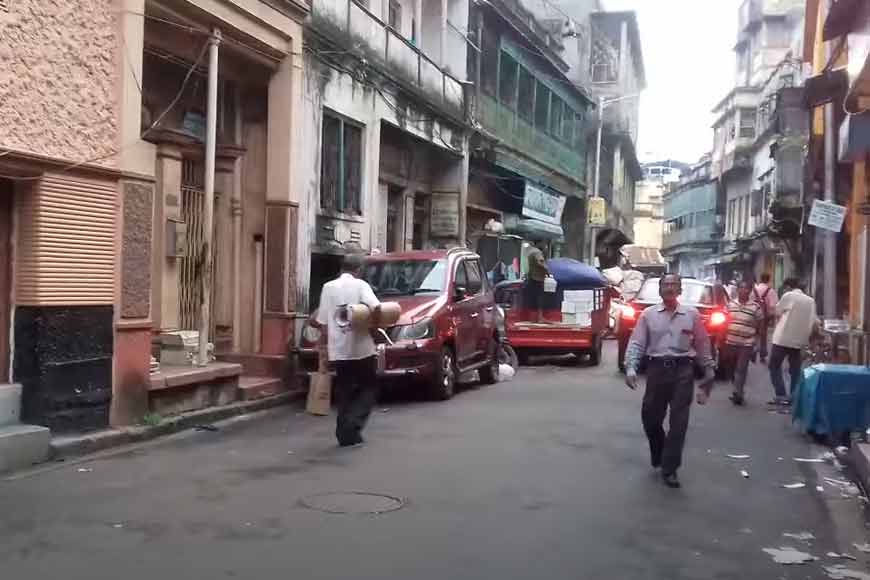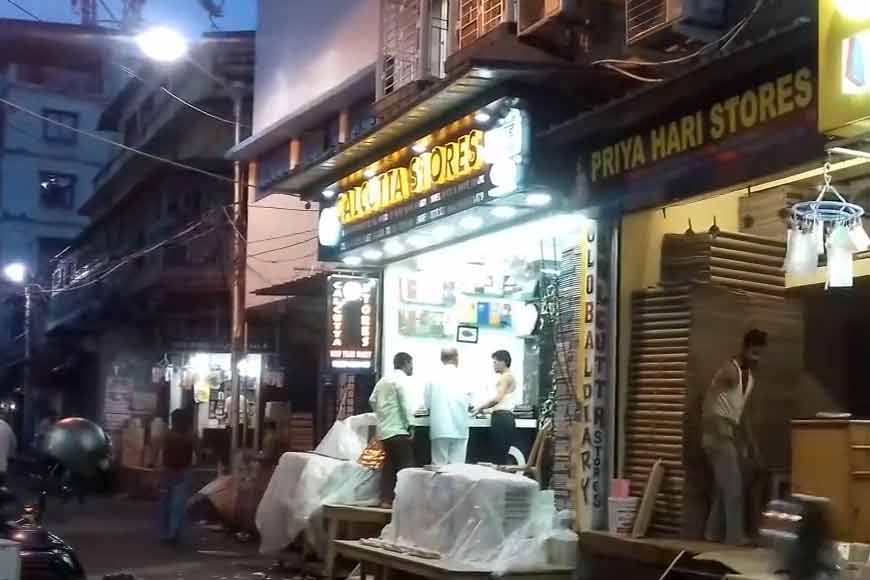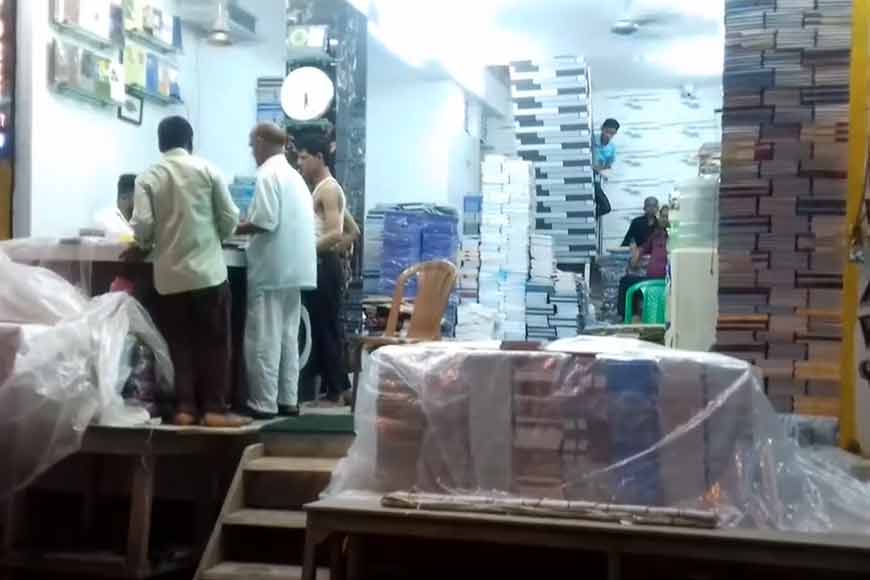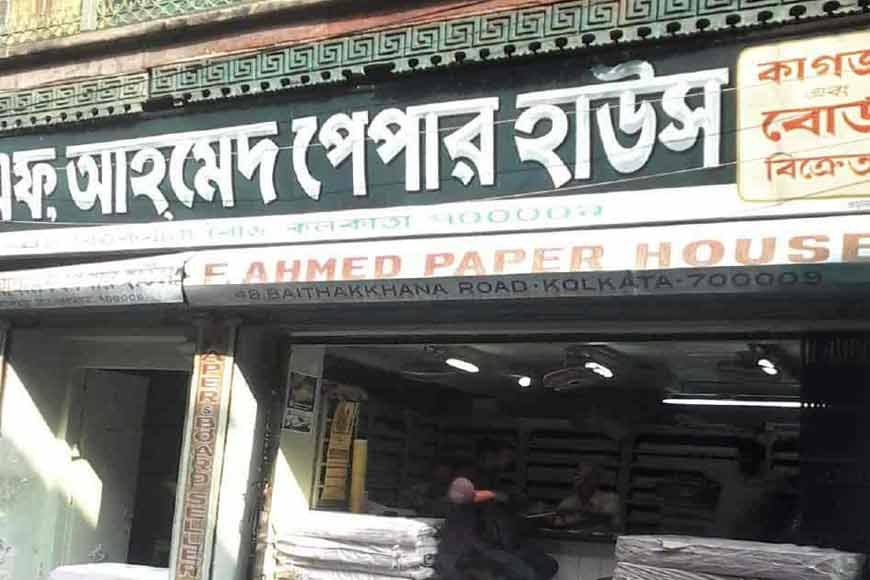Why is India's largest paper market named 'Baithakkhana Bazar' - GetBengal story

IKolkata is a city of paradoxes. It is as much parochial as it is modern and lives in the past as much as it lets its past decay. Who would have imagined Kolkata to be a modern, living entity in the 21st century when way back on August 24, 1686, Job Charnock, a young enterprising trader first came to the village of Sutanuti as a representative of the British East India Company to establish a factory? The company soon bought three riverside villages -- Kalikata, Gobindapur, and Sutanuti -- housed on the east bank of the Hugli (Hooghly) River, which was once the main channel of the Ganges (Ganga) River, about 96 miles (154 km) upstream from the head of the Bay of Bengal. Soon the area was developed into a riverine port which served as an important trading center in the 16th, 17th, and 18th centuries.
 Baithakkhana Bazar, Kolkata
Baithakkhana Bazar, Kolkata
In 1772, when Calcutta was announced as the capital of British India, Warren Hastings, the first and most famous of the British governor-general of India moved all important offices from Murshidabad -- the former capital of Bengal during the Mughal Period -- to Calcutta. The run-down part of Kolkata’s lanes, bylanes, and neighborhoods are steeped in history and their queer names and myths surrounding the area bear evidence of their glorious past. Take for instance, the name Baithakkhana Bazar. An ancient marketplace ensconced in the heart of Bowbazar area of central Kolkata is a very busy area, throbbing with activities at all hours of the day. Baithakkhana is one of the largest paper markets in India. However, the letterpress business, once the largest printing process in the country and the pride of Bengal, has lost out to more modern systems. Baithakkhana Bazar is also one of the biggest retail groceries and FMCG (Fast-moving consumer goods) markets of eastern India. It is one of the oldest wholesale markets for vegetables and fish in the city.
 Baithakkhana Bazar: Asia's Cheapest Printing and Paper Market
Baithakkhana Bazar: Asia's Cheapest Printing and Paper Market
On Lt. Col. Mark Wood’s map of 1784, the portion of the eastward road from Lal Bazar to what was known for a long time as Circular Road -- which ran along the filled-in Marhatta Ditch and is now Acharya Jagadish Chandra Bose Road -- was shown as Boytaconnah Street, which derived its name from Baithakkana, or "drawing room aka sitting room for gathering and chatting." Why such a queer name? This was an area where merchants formed and dispersed their caravans, sheltered by an old banyan tree (called a peepul tree in Cotton), at the road's eastern extremity. A road stretching from B.B. Ganguly Street (Bowbazar) to Mahatma Gandhi Road is called Baithakkhana Road, as well as the market along the road at the easternmost part of B.B. Ganguly Street is also called Baithakkhana Bazar.
 F Ahmed Paper House, Amherst Street, Kolkata
F Ahmed Paper House, Amherst Street, Kolkata
The name Baithakkhana is related to the ‘founder of the city’, Job Charnock. According to lore, after Charnock pitched a tent on the swampy banks of the Hooghly, the East India Company bought three riverside villages to set up a factory and initiate its expansion plan. This was the time when Bengal was the hotspot and was frequented by not only the English but also French, Dutch, Portuguese and many other traders from European countries ventured to set up base in this developing city. There was a sudden scramble for space in the swampy, thickly forested inhospitable land, infested with armed robbers, flies, and mosquitoes. Charnock looked for land and zeroed in an area in the present Bowbazar area. Soon, he realized it was getting difficult for him and other Europeans to conduct business with the locals due to a lack of communication. Charnock was an astute man and knew if he had to surpass his competitors, he would have to befriend local people. So, he took the initiative to chat with the native traders. This familiarity helped him get access to classified business information that gave him the edge over other European traders and business communities to flourish.
According to legend, Charnock met his native acquaintances in the area under a ‘Bat-tola’ (banyan tree) to chat with them and complete his business dealings. People gradually started calling the place ‘Baithakkhana’ or a drawing-room. And the name stuck to the market and the adjoining road as well.










